Mullard Space Facilities & Capabilities Introduction
advertisement
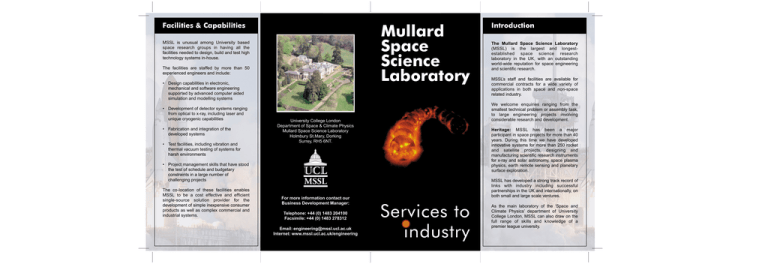
Mullard Space Science Laboratory Facilities & Capabilities MSSL is unusual among University based space research groups in having all the facilities needed to design, build and test high technology systems in-house. The facilities are staffed by more than 50 experienced engineers and include: • Design capabilities in electronic, mechanical and software engineering supported by advanced computer aided simulation and modelling systems • Development of detector systems ranging from optical to x-ray, including laser and unique cryogenic capabilities • Fabrication and integration of the developed systems • Test facilities, including vibration and thermal vacuum testing of systems for harsh environments University College London Department of Space & Climate Physics Mullard Space Science Laboratory Holmbury St.Mary, Dorking Surrey, RH5 6NT. For more information contact our Business Development Manager: Telephone: +44 (0) 1483 204100 Facsimile: +44 (0) 1483 278312 Email: engineering@mssl.ucl.ac.uk Internet: www.mssl.ucl.ac.uk/engineering The Mullard Space Science Laboratory (MSSL) is the largest and longestestablished space science research laboratory in the UK, with an outstanding world-wide reputation for space engineering and scientific research. MSSL’s staff and facilities are available for commercial contracts for a wide variety of applications in both space and non-space related industry. We welcome enquiries ranging from the smallest technical problem or assembly task, to large engineering projects involving considerable research and development. Heritage: MSSL has been a major participant in space projects for more than 40 years. During this time we have developed innovative systems for more than 250 rocket and satellite projects, designing and manufacturing scientific research instruments for x-ray and solar astronomy, space plasma physics, earth remote sensing and planetary surface exploration. • Project management skills that have stood the test of schedule and budgetary constraints in a large number of challenging projects The co-location of these facilities enables MSSL to be a cost effective and efficient single-source solution provider for the development of simple inexpensive consumer products as well as complex commercial and industrial systems. Introduction MSSL has developed a strong track record of links with industry including successful partnerships in the UK and internationally, on both small and large scale ventures. Services to industry As the main laboratory of the ‘Space and Climate Physics’ department of University College London, MSSL can also draw on the full range of skills and knowledge of a premier league university. Detector Physics Electronic Engineering Mechanical Engineering Software Engineering MSSL’s experts apply a range of hardware and techniques to produce the detectors that are the heart of ground-breaking measurement and imaging instrumentation. The ability to think “out of the box” is essential to meet the extraordinary demands of science in space and other harsh environments. Specific areas of expertise include: The electronic engineering group consists of 20 highly experienced engineers and technicians organised in groups dedicated to design, PCB layout and assembly. The areas of expertise include: The mechanical engineering group consists of 18 highly qualified engineers and technicians who staff a design office, manufacturing workshop, environmental test facilities including vibration and thermal vacuum test and a class 100 cleanroom. Specialities include: MSSL’s software engineering capabilities have been developed to meet the needs of real-time spacecraft instrument control and onboard data processing, where the ability to develop high quality, reliable, fault tolerant, efficient and flexible software to demanding schedules are essential qualities. • Static & dynamic 3D structural analyses The capabilities are applied in three main areas: Flight Software; Test Software; and Modelling and Simulation Software, and include: • CCDs and associated readout electronics – For imaging and spectroscopy from optical to x-ray wavelengths • Cryogenics – New cooling techniques and photon detectors from room temperature down to below 10 mK • Electron and ion analysers/detectors – Using microchannel plate (MCP) imaging Intensifiers • Optical to x-ray imaging based on various combinations of intensifier tubes, MCPs, imaging anodes, phosphors, fibre-optics and CCDs • Low noise and wideband analogue signal conditioning • Precision instrumentation circuitry • Thermal design/control of instruments • Signal conversion including high speed and high-resolution ADC and DAC functions • Microprocessor, DSP, micro-controller & discrete logic systems often using FPGAs • Low voltage and high voltage power conversion with compliance to demanding EMC specifications ‘State of the art’ CAE tools are used for PCB layout, design capture, simulation and synthesis. Technicians with space agency qualifications carry out assembly of complex PCBs and wiring harnesses. • The design of cryogenic, vacuum, detector and optical systems • Real-time, multi-tasking, embedded software • Packaging of complex electronics • Integration and qualification testing of instruments Innovative lightweight designs utilising a wide range of materials and construction techniques are used to meet challenging requirements. Extensive experience of working with aerospace industry and many national space agencies has been gained. • Manual and autonomous control; monitoring and autonomous safing; data compression; diagnostic and corrective inoperation facilities • High level scientific implementation • Low and high level displays, error detection and reporting; networking and security • Quality assured management and development to space agency standards Laser-machined imaging anode High-performance electronics Preparing space telescope for delivery Research in data compression
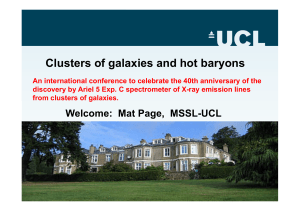

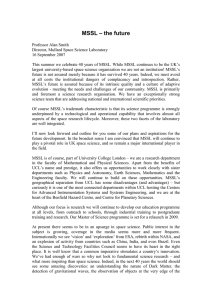
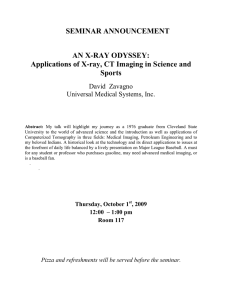
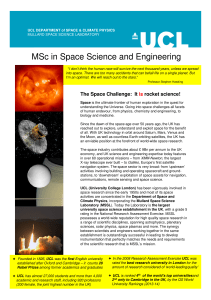
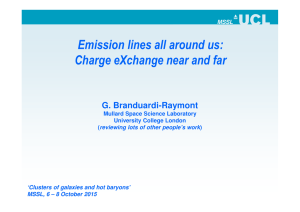
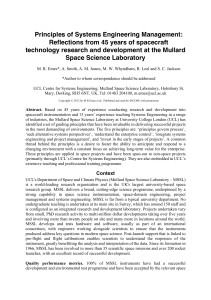
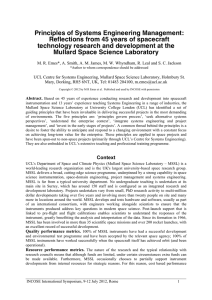


![Physics of Radiologic Imaging [Opens in New Window]](http://s3.studylib.net/store/data/008568907_1-1e7d7b82bfd2882a3a695d3f7c130835-300x300.png)
